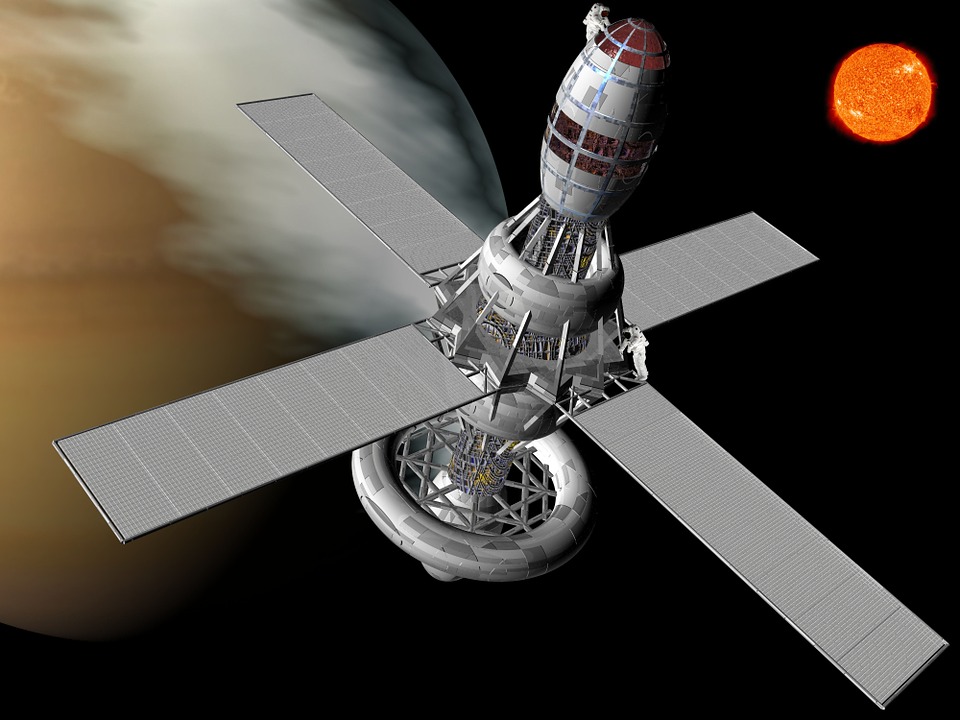Astronauts have to endure a freeze-dried menu whenever they have to go up into space. However, that may change as NASA announced the success of their space-grown lettuce.
Express reports news of the successful space-grown lettuce at the International Space Station or ISS. The lettuce was grown in batches over a span of two years between 2014 and 2016. Known as Veggie, the system that was followed was made up of plant pillows, which are sealed units that have ceramic soil, LED lights, and the water was injected through tubes. It took 33 to 56 days before they were harvested, and the astronauts on board were said to have sanitized the leaves with wipes before sending it to Earth for analysis.
Upon further study, the team in charge of the lettuce project found that there were no traces of bacteria like coliform e.coli or salmonella. According to the project’s lead scientist, NASA’s Dr. Gioia Massa, growing food in space could be beneficial to astronauts who have to be in orbit for a longer period of time, like long-haul missions such as the Artemis III, the agency’s upcoming moon mission set to launch in 2024 as well as the unmanned Mars mission that will happen in the latter part of the decade.
Dr. Massa also said that there might be psychological benefits to growing plants and looking after plants in space. Once the astronauts were given the clear, they were able to eat the lettuce and said that it tastes just as good as the usual lettuce grown on Earth. NASA already plans on expanding what else that could be grown onboard the station, such as bok choi, dragon lettuce, wasabi mustard, and red Russian kale as well as tomatoes and peppers.
Meanwhile, it was previously reported that a group of researchers discovered a kind of alien protein on a previously-studied asteroid that seems to suggest that life is present in space.
The said protein found in the asteroid is referred to as hemolithin, which is generally made up of amino acid glycine with iron, lithium, and oxygen. These elements may all seem familiar, but this is the first time scientists have seen such a combination. Even though this molecule does not seem to suggest life, they believe that hemolithin may have been involved.



 Lost in space: MethaneSat failed just as NZ was to take over mission control – here’s what we need to know now
Lost in space: MethaneSat failed just as NZ was to take over mission control – here’s what we need to know now  FDA Lifts REMS Requirement for CAR-T Cell Cancer Therapies
FDA Lifts REMS Requirement for CAR-T Cell Cancer Therapies  NASA and Roscosmos Chiefs Meet in Florida to Discuss Moon and ISS Cooperation
NASA and Roscosmos Chiefs Meet in Florida to Discuss Moon and ISS Cooperation  Eli Lilly’s Inluriyo Gains FDA Approval for Advanced Breast Cancer Treatment
Eli Lilly’s Inluriyo Gains FDA Approval for Advanced Breast Cancer Treatment  Trump Signs Executive Order to Boost AI Research in Childhood Cancer
Trump Signs Executive Order to Boost AI Research in Childhood Cancer  CDC Vaccine Review Sparks Controversy Over Thimerosal Study Citation
CDC Vaccine Review Sparks Controversy Over Thimerosal Study Citation  Neuralink Expands Brain Implant Trials with 12 Global Patients
Neuralink Expands Brain Implant Trials with 12 Global Patients  SpaceX’s Starship Completes 11th Test Flight, Paving Way for Moon and Mars Missions
SpaceX’s Starship Completes 11th Test Flight, Paving Way for Moon and Mars Missions  SpaceX Starship Test Flight Reaches New Heights but Ends in Setback
SpaceX Starship Test Flight Reaches New Heights but Ends in Setback  NASA Astronauts Wilmore and Williams Recover After Boeing Starliner Delay
NASA Astronauts Wilmore and Williams Recover After Boeing Starliner Delay  Astronomers have discovered another puzzling interstellar object − this third one is big, bright and fast
Astronomers have discovered another puzzling interstellar object − this third one is big, bright and fast  Cogent Biosciences Soars 120% on Breakthrough Phase 3 Results for Bezuclastinib in GIST Treatment
Cogent Biosciences Soars 120% on Breakthrough Phase 3 Results for Bezuclastinib in GIST Treatment 































